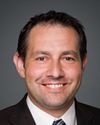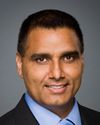Mr. Moore, thank you for the opportunity.
Those guys are good. I actually don't have much left to say. They said it all.
My name is Pierre Lafontaine. I'm the national swimming coach and CEO of Swimming Canada, which is a different role from most other sporting organizations. Usually they have a CEO and they have a national coach.
I moved here seven years ago from Australia because the Canadian swimming program was in disarray. They hadn't won a medal at the Olympics for several Olympic Games. I'm Canadian from the suburbs of Montreal, but I left the country in the early 1980s. One of the main reasons I decided to come back was I felt that in Canada the world of winning was possible again. People talked about winning. It wasn't like everybody had the Kumbaya approach, that everybody has to be nice to everybody. Following my arrival, Alex Baumann came. Alex had been living in Brisbane and I had been living in Canberra.
My sport represents 100,000 members, and two million kids who take swimming lessons. Not that I'm competitive, but more kids swim than play soccer. Before coming here today, I was wondering how to dress. I thought maybe I would come in my Speedo, but I thought that might not be the best thing for all of us.
Before getting on the plane and moving from Australia, I remember my buddies and swim coaches in Australia saying, “What? You're going to Canada? They're so bad in swimming. What are you doing?” At the pool where I coached, I had 16 kids, and eight of them were Olympic gold medallists. When I came to Canada, the whole country hadn't won one gold medal since 1992. Even sometimes I'd wonder what I was doing.
Regardless of where I live in the world, Canada is where I come from, and it's always dear to my heart. Even when I was coaching in the U.S. and Australia, there was always a piece of me going, “Man, we have to be better”. Swimming is a summer sport for Canada. It's what we do. We go sailing and boating. We swim in backyard pools. We go to the lake. It is the Canadian thing to do in the summer.
To me, part of my discussion with you today is not just about the Olympics, but about the power of what the Olympics do to a nation. We should be the first nation in the world that actually talks about having zero drownings. You probably don't know, but over 600 kids a year drown in Canada. Every one of them is somebody's daughter or son. I would hate to think that we don't apply ourselves to something as preventable as drowning, that we don't fight like crazy to make sure that every child in Canada knows how to swim, because that's how people enjoy Canada in the summer.
When I arrived here in 2005 we started a new strategic plan. Our plan was to have a family-friendly organization and to create an environment where every kid is safe, where there's respect for each other, where there's integrity within the program, where there's commitment and accountability on the part of the coaches, kids, and parents.
All of you know there are no children's sports without volunteers. If it weren't for volunteers in this country, we wouldn't have sports. Not long ago, in one of the budgets the government added a tax credit for volunteer firefighters. I would beg you to consider finding ways to recognize our volunteers across the nation who help with our youth program. I do believe that Own the Podium actually starts in all the municipalities. That's where the dream of ever being on the podium at the Olympics or the Paralympics begins.
We made our selection for the Olympic team in Montreal at the Olympic pool. We've been doing it since I've been back. The Olympic pool is our history. It's where people dream and great things happen for Canada. It hurt me throughout the 2010 Olympics when people said that we won our first gold medals ever on Canadian soil at our Olympic Games. I can tell you that if it weren't for the drugged East Germans in 1976, your swimmers alone would have won four gold medals. We're still suffering, and some of these kids are still suffering today because of that concept.
Your swimming team was also the first to have Olympic and Paralympic trials together. These kids are in the same pool. They train in the same pool. They're the same family. They are coached by the same coaches. It was a really great success. We had over 800 kids from around the country, over 5,000 spectators who watched it on TV, close to 100,000 on webcasting. Your team is now composed of 31 swimmers: 13 males, 18 females. We're ranked at anywhere between 10th and 12th at the Olympic Games.
I want to talk to you a little bit about what we've done during the last four years, just to prepare you for where we're going. We've planned three medals—that was our goal in 2005—and to create an environment to allow us to have three medals. That means a program for coaches, a program for clubs, a program for developing officials, and so on.
Also, let me just talk to you about the last four months. It's been quite exciting. We had a camp in Arizona. We brought the whole team. We brought sports psychologists, nutritionists, and so on. We also partnered with the Cirque du Soleil. The reason we partnered with the Cirque du Soleil is that it's one of the greatest organizations in the world in their art. They're great athletes. I approached them and I said I wanted to associate my organization with the best in the world and the best Canadians. They were so excited to work with us.
We ended up in Las Vegas in September for five shows, and our swimmers trained with their artists. Then when we came back for the Olympic trials, the next day we went to the new show in Montreal and trained with them for a day, and basically shared what it was about being the greatest in the world. That was really exciting for us.
Our camp will be in Italy prior to the Olympic Games. We're going to spend two weeks in Italy. The reason we're going there is I just felt that if we go to the British Isles, there's going to be so much hype. It's just too much. So we're going to stay in a little town of 7,000 people. The mayor of the town loves swimming. He put a 50-metre pool in the middle of this little village. It's going to be nice in Sardinia.
The reason I'm telling you this is because I believe the power of the sport is to inspire Canadians. It's to make every single child think, “My goodness, it's amazing to be Canadian”, number one, and that in fitness, the role of a child or the job of a child is to play. I strongly believe that part of our role here is to create an environment where every kid wants to do something. It doesn't have to be swimming—I'd love that. Having 10 million kids who swim would be great. Then they'd get so hot in soccer that they'd have to come to swim. That's why it's really important that we teach swimming to these kids.
I also believe that the power of teams and the power of sport is how we could use sport in schools to engage kids. I think our boys are having trouble in school. It's certainly one of the biggest tools to engage boys in school. I can tell you, I have two boys, and if it weren't for sports, I'm not sure they'd still be in school. I'm a big fan of sport in school and what it does to them in terms of building everything, which is learning to lose, learning to win, being a teammate, being a proud Canadian.
At the end, for me, it's about building dreams for Canadians and using our power to do that.
For you to understand the growth of the Olympic movement, in 1988 in my sport there were 80 countries. This year 185 countries are competing in swimming. It's something like 205 in track and field.
So it doesn't get any easier. It gets harder and harder. I could tell you that more and more governments around the world are using sport as a platform to sell what they do. The power that we have in our medals is what the medals will do post-Olympic Games to engage Canadians, to engage every child in the country.
I couldn't do it without the Government of Canada. I know we've all said this, but I keep telling you, there's no way we could do it without Sport Canada, Own the Podium, COC, the CPC. Even the messaging that's been taken out there now with you—I'm talking about what the government's saying—we believe in sport and the power of sport. We're going to keep funding this. What it did to our athletes was it made them think, “Wow, they believe in us. So if it's to be, it's up to me.” I think it was a great message.
I could tell you that my swimmers around the country are excited to represent you. Like Peter, they're not going there to participate. They want to go there and make you proud. They want to be there to engage the 40,000 swimmers we have in our swim club, the 1.5 million kids in our swimming lessons. That's why they do it. They do it for themselves too. I think at the end the fun thing is they want to get the tattoo of the maple leaf on their hearts. That's one of the great things swimmers want to do.
We can't do it without TV. We can't do it without great ethics in this country against drugs. I think we have to fight like hell—excuse the expression—to make sure we keep clean sports. We have problems with banned coaches who are still coaching on pool decks, or soccer fields, or hockey arenas. We have to do everything we can to stop that.
I'm going to close up with a few comments about having to find ways to build great after-school programs. That's where it all starts. That's where the kids in the schools need to be engaged.
I think the message that we should be and can be the fittest nation in the world is what we're about. I'm telling you that if you pass those messages to us over here, we'll do it for you. But we need the vision to be creative out there and say we deserve to be the fittest nation, no different from our children deserving the best school system in the world. There's no reason we're not the fittest nation in the world.
Through Mr. John Weston, on Saturday we started the first Health and Fitness Day in Canada, where we've pushed the municipalities to open every facility in their community for free on the first Saturday of June to promote healthy living and active living. Sports Day in Canada, September 29, is another great way to promote sport in Canada.
I would love to challenge each one of you. Terry Fox Day, which I think is September 16 or 17 this year, is an icon. I've lived around the world; he's an icon around the world. Almost a thousand races happen around the world—I was in Australia—and it brings Canadians together. I would love to think that we could get 308 MPs and 105 senators to run the Terry Fox Run and pass the message that fitness is important: be a healthy Canadian; life is important for Canada.
I'm going to finish with this. Thursday mornings I run swimming lessons for MPs at the Chateau Laurier, from 6:45 to 7:30. I've got about 15 of you who show up. Today I brought swim caps for every one of you. When we're done here, you can come and get the swim caps, and I expect you to be there. You don't have to wear Speedos. I'll provide goggles.
Thank you very much.
Actually, Ms. Joy Smith—I think from Winnipeg—came for the first time eight weeks ago. She hadn't swum in her life. Her brother had drowned. She learned to swim in 45 minutes and swam a lap at the Chateau Laurier. That was probably one of the greatest days—after 40 years of working with swimmers—one of the nicest days of my life for why I do what I do. It's to change lives and influence people to make great choices in their lives.
Thanks. Go, Canada, go.










